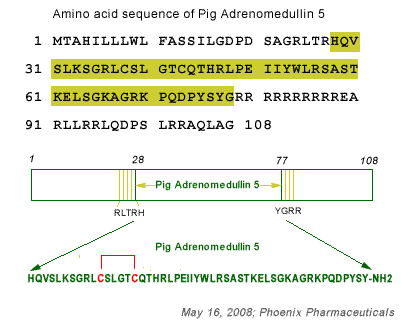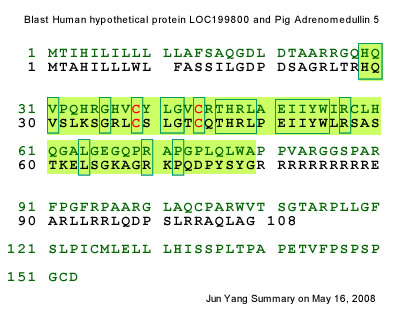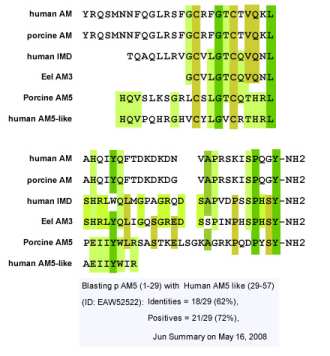Adrenomedullin 5 (AM5) is a new member of the calcitonin gene-related peptide (CGRP) family identified in teleost fish. Although its presence was suggested in the genome database of mammals, molecular identity and biological function of AM5 have not been examined yet. In this study, we cloned a cDNA encoding AM5 in the pig and examined its cardiovascular and renal effects. Putative mature AM5 was localized in the middle of prohormone and had potential signals for intermolecular ring formation and C-terminal amidation. The AM5 gene was expressed most abundantly in the spleen and thymus. Several AM5 genes were newly identified in the database of mammals, which revealed that the AM5 gene exists in primates, carnivores, and undulates but could not be identified in rodents. In primates, nucleotide deletion occurred in the mature AM5 sequence in anthropoids (human and chimp) during transition from the rhesus monkey. Synthetic mature AM5 injected intravenously into rats induced dose-dependent decreases in arterial pressure at 0.1-1 nmol/kg without apparent changes in heart rate. The decrease was maximal in 1 min and AM5 was approximately half as potent as AM. AM5 did not cause significant changes in urine flow and urine Na+ concentration at any dose. In contrast to the peripheral vasodepressor action, AM5 injected into the cerebral ventricle dose-dependently increased arterial pressure and heart rate at 0.1-1 nmol. The increase reached maximum more quickly after AM5 (5 min) than AM (15-20 min). AM5 added to the culture cells expressing calcitonin receptor-like receptor (CLR) or calcitonin receptor (CTR) together with one of the receptor activity-modifying proteins (RAMPs), the combination of which forms major receptors for the CGRP family, did not induce appreciable increases in cAMP production in any combination, although AM increased it at 10(-)(10)-10(-)(9) M when added to the CLR and RAMP2/3 combination. These data indicate that AM5 seems to act on as yet unknown receptor(s) for AM5, other than CLR/CTR+RAMP, to exert central and peripheral cardiovascular actions in mammals.



Social Network Confirmation